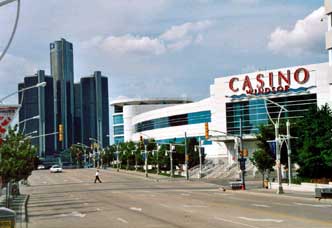
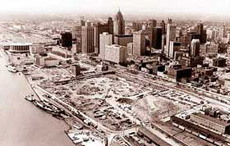
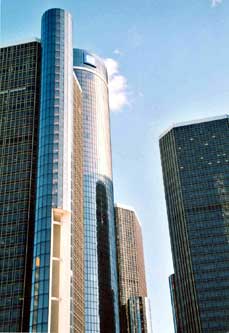
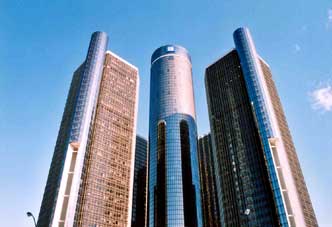
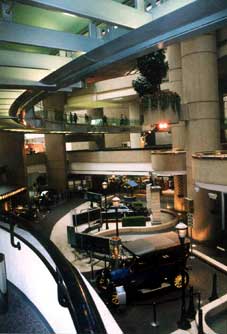
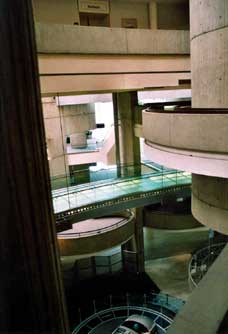
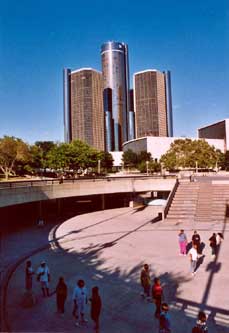
|
|
|
|
|
|
|||
|
|
|||
The Detroit riots of 1967 were the worst America had ever seen and made it clear to the nation that the city was at breaking point. Economic problems went hand in hand with the racial ones, and white flight to the suburbs began to accelerate. The downtown core especially showed signs of the economic strain.
In order to try and counteract this, a group of businessmen came together in 1970 to form 'Detroit Renaissance', dedicated to stimulating an economic boom in Detroit. The following year, on Nov. 24, 1971, Henry Ford II, the head of Detroit Renaissance, announced plans to the City Mayor for a $500 million development that would include hotel, office and residential space on the riverfront. John Portman was named as the architect. Portman had pioneered the role of architect/developer role with the Peachtree Centre in Atlanta as well as the Embarcadero Center in San Francisco and had become famed for his buildings grand populist interior spaces.
The development (which became know as the 'Renaissance Centre' after a public competition to find a name) would be the largest privately financed project in the world ($500 million equates to over $2 billion today). Phase one would consist of four 39-story office buildings and one 70-story hotel - for a time the worlds tallest - and phase two consisted of two further office towers. Construction started in late 1973 and over the next 3 and half years forty thousand tons of structural steel and two million square feet of glass would encase the five buildings.
On Friday April 15, 1977, 1,000 spectators cheered as Henry Ford II and Detroit Mayor Coleman Young unveiled a plaque commemorating the private investors whose funds made the project possible. Ford said, "Detroit has reached the bottom and is on its way back up."
In 1978, Mayor Coleman A. Young and the Downtown Development Authority invited a team of architects for their professional opinion of Renaissance Center. Their study was critical of many of the design features, especially the resulting isolation. The study was also critical of the city's poor riverfront planning and lack of planning in general. A later study was critical of the high retail vacancy rate in the Center. On the architect's web site today, The Renaissance Center is notably not among his list of "Achievements". Phase III, the residential development, was left by the wayside, as Detroit's population continued to leave the city throughout the 80's. In 1982, the City measured the population of the Central business district as 37% lower than in 1970.
By 1983, the RenCen was in default in its mortgage payments for the second time, and the four insurance agencies that bankrolled the construction, along with Ford Motor Credit, assumed 53% ownership. In 1987 the People Mover, many years in the building, began operation, with a stop at the Renaissance Center, that soared over the forbidding concrete berms. Finally, in May of 1996, General Motors announced that it was buying the Renaissance Center from then owner Highgate Hotels in Texas for $73 million, and would spend up to $500 million in renovation costs.
|
|
|
|
|
|
|||
|
|
|||
Images, from top: 1. The Renaissance Center view from the Canadian city of Windsor 2. The building towers above the entrance to the Detroit-Windsor tunnel 3. The site at the start of construction in 1974 4. The GM logo now sits atop the 90 storey tower originally conceived by arch rival Henry Ford II 5. The centre tower is now a Marriott hotel, GM's partner in the $500 refurbishment program 6. The central atrium, looking down onto GM World 7. The crazy maze of the interior space 8. Morning exercise at Hart Plaza

